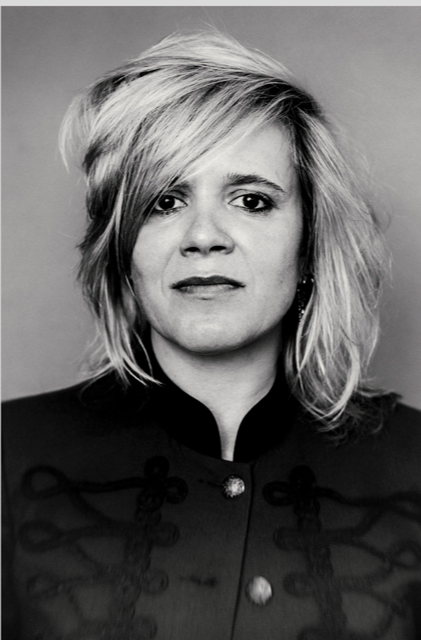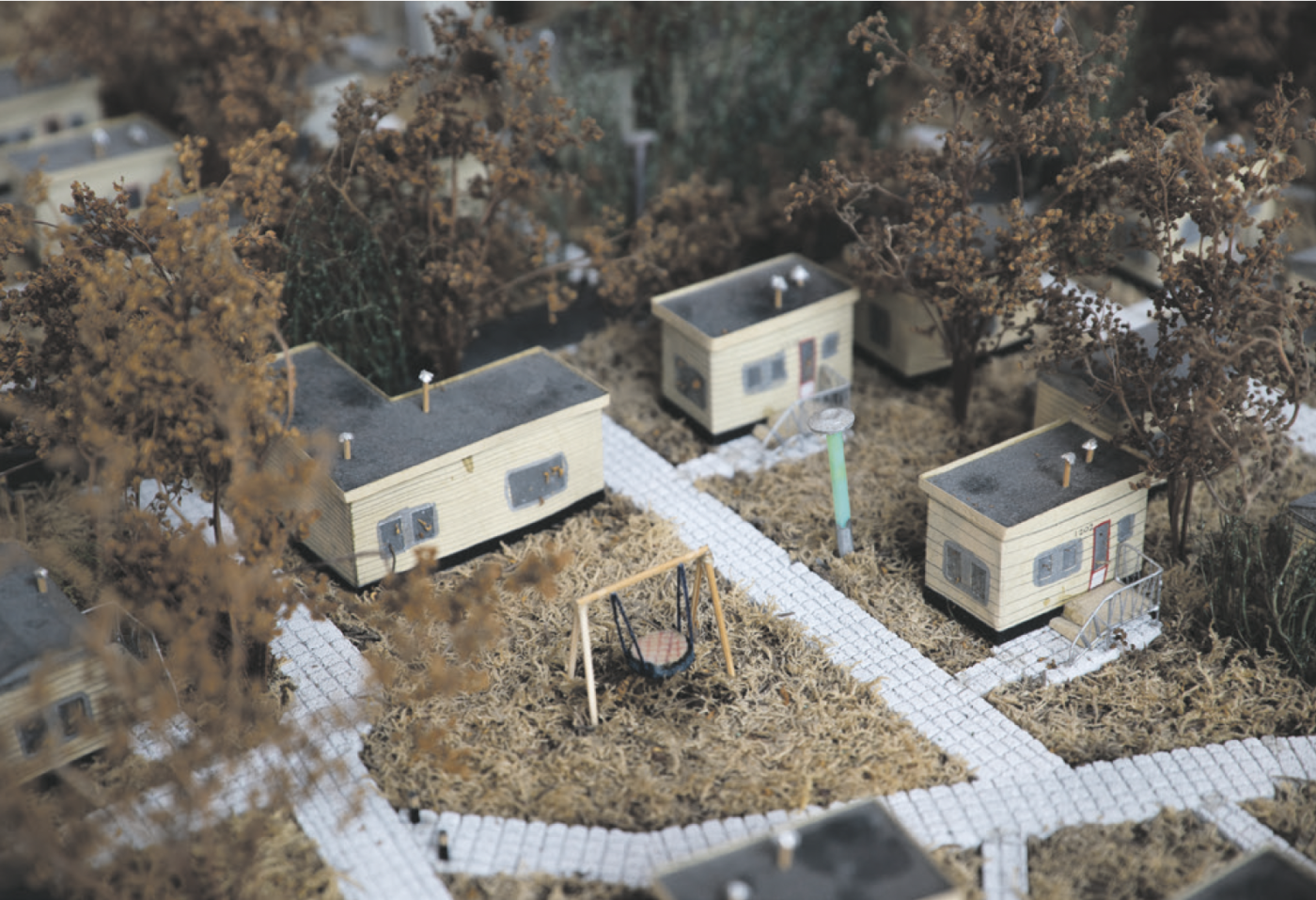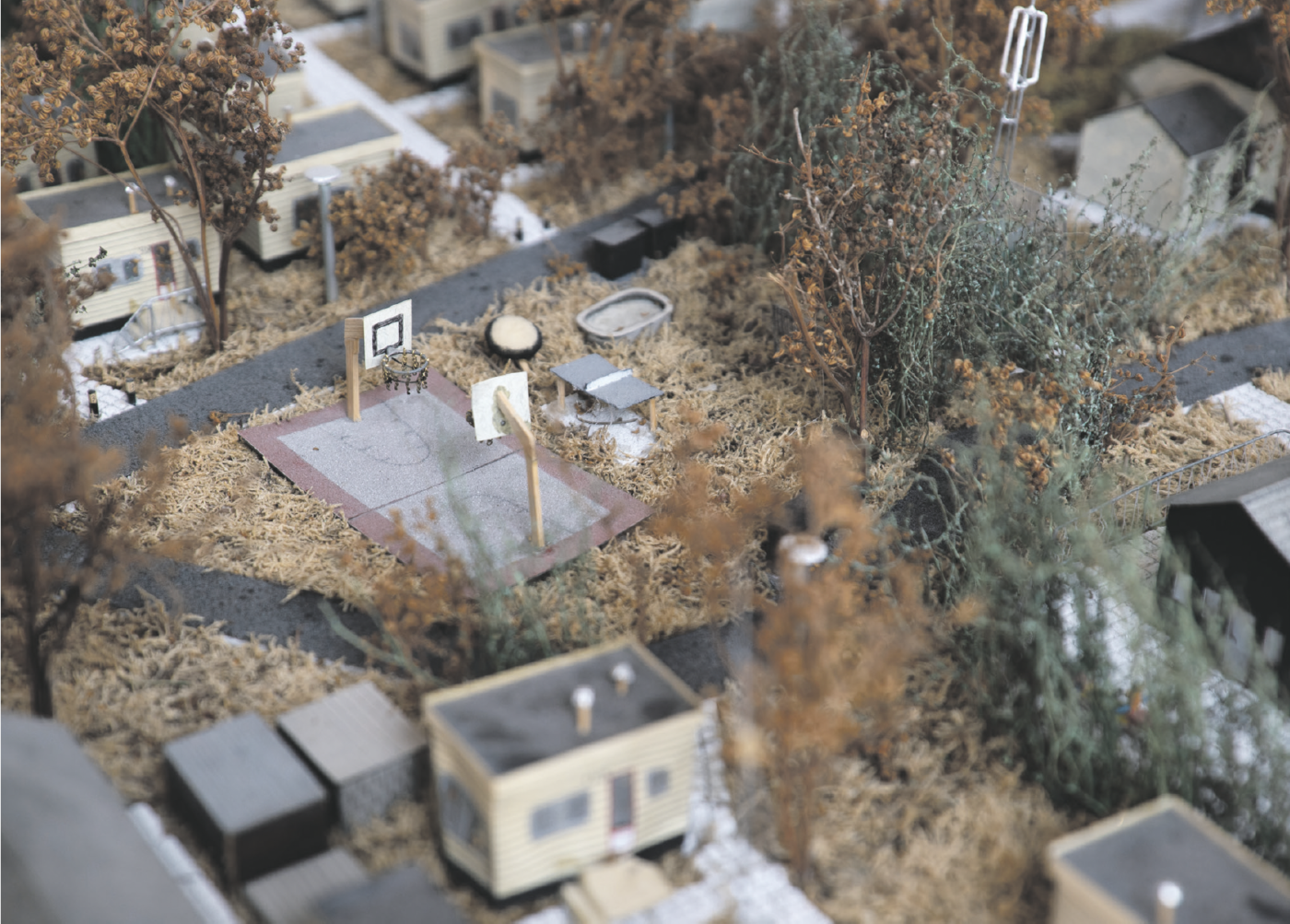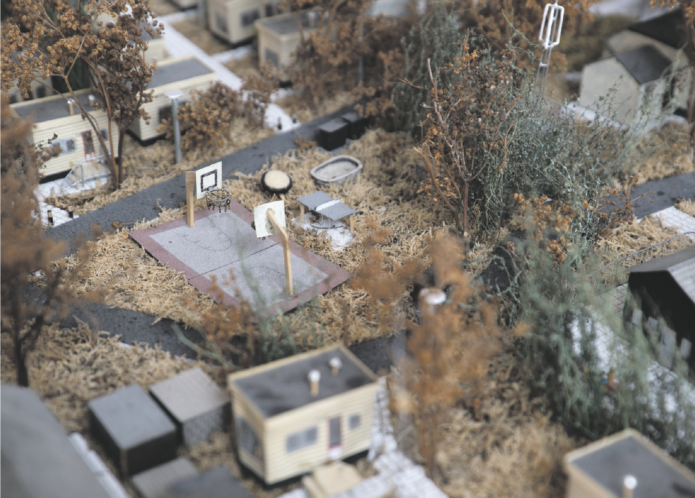It began in caravan 404 - a story about a maquette without a residence permit
Ten years ago, Karen Gregazarian built an enchanting maquette of his then environment, the asylum seekers’ centre Markelo. Its model is now on show at Framer Framed in Amsterdam Oost.
Text and photography: Mina Etemad
December 2022
Karen Gregazarian, along with his wife and three children, came to the Netherlands from Abkhazia in 2010. They ended up in the asylum seekers’ centre Markelo (AZC). The AZC was once a holiday park, full of caravans, playgrounds and trees. ‘It was beautiful and green there,’ says Gregazarian. ‘But life was difficult. You didn’t know what would happen and whether you would be sent back.’
Without much to do and not knowing how to pass the time, Gregazarian started making presents for the asylum seekers’ centre staff, to whom he was so grateful for all their care. He loved being busy with his hands, so when he heard in 2012 that their AZC was going to close, he had another idea. ‘I wanted to have a memory of that place.’ He had never made a model before; in Abkhazia he repaired cars. ‘But here I walked the site every day and counted the distances between all the buildings and objects. I took in the 90-plus caravans and then drew everything on paper.’
Gregazarian collected branches, moss, cardboard, wood, pieces of iron, anything he could find to recreate his surroundings so faithfully. ‘Sometimes I did tests with the materials. For example, I wet the cardboard and examined how firm it was, to judge whether it would not break.’
With his family, he sat in caravan 404, somewhere in the middle of the site. There he started making the model, though that space soon proved too small. Staff assigned him a vacant building where he could work undisturbed. ‘I sat there mostly at night, when everything was quiet, until I heard the first birds chirping.’
After a few weeks, the model was ready. Everyone in the asylum seekers’ centre was impressed by it and the staff asked him what to do with it. ‘I said they could decide that. I had finished my work.’ He left the asylum seekers’ centre and lost sight of the model.

‘Maquette’ by Karen G. Foto: Mina Etemad
Lights
From then on, the maquette wandered around the country for years. Although several people felt responsible for it, no one could store or exhibit it anywhere for a long time. So it ended up in a museum in Markelo, in the office of a film company, and even in a dentist’s office.
Heritage professional Milena Mulders had seen the model pass by in a documentary and was fascinated by it even then. ‘I find it very poetic. I also find it very uncomfortable. You have certain associations with an asylum seekers’ centre, for example, that it is terrible there. We never actually think about what life there is like. We just don’t look at it.’
She thought it valuable that this object did force her to think about life in the AZC, so when she read in an appeal in early 2020 that the model had to be removed from its location within two days, she immediately sprang into action.
She called some acquaintances to find a new place for it to stay and to arrange a transport van. One of them was Migration Historian Hanneke Verbeek, who, like Mulders, was immediately convinced that this object should be preserved for the time being.
Together, they found a new temporary home, and have been taking care of the object ever since. They managed to track down creator Karen Gregazarian and reunite him with his work, making for a special moment. A video made of that event shows Gregazarian looking at the maquette endearingly. He remains silent for a while and grins a little, then he bends under the table to fix the button that turns on the 390 lights in the buildings and lampposts. When it works, Mulders and Verbeek let out a cry of amazement, although not all the lights turn on immediately. A few weeks later, Gregazarian repairs the model and all the lights are working once more.
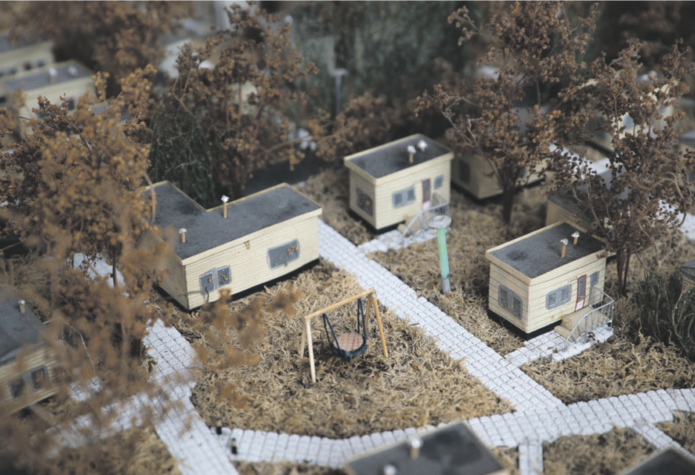
‘Maquette’ by Karen G. Foto: Mina Etemad
Football
Mulders and Verbeek also felt it was important for the model to return to its place of origin. Thus, from the beginning of this year until August, it stood in cultural centre Het Beaufort in Markelo. There, former residents, employees and other interested parties could visit the reconstructed asylum seekers’ centre.
One of those former residents is Ferdos, who spent his teenage years there. When he saw the model, all sorts of memories came to him. ‘We used to play football here, on this field next to the school.’ He is silent for a moment. ‘I see it as a part of my life. This AZC may have made me the person I am today.’
Milica and Shkurta also spent their childhood in the asylum seekers’ centre and it was there they became best friends. Shkurta: ‘We had so much fun. I always went to Milica’s place at nine in the morning to play outside with her. It was always just the two of us.’ Their friendship seems somewhat unlikely: Shkurta’s parents had fled from Kosovo and Milica’s from Serbia, due to the war between the two countries.
Heritage
For many former residents, it is worthwhile to see the maquette again. However Milena Mulders wonders, ‘is this maquette also an important object for people who have not lived in Markelo or lived in the asylum seekers’ centre?’
Actually, this is a question about what we see as cultural heritage. Mulders: ‘What should we preserve to better understand today’s society later on? I have been asked several times by all kinds of cultural institutions: can you find another object related to labour migration? Maybe a Moroccan who wants to tell a story with a suitcase attached? The suitcase is always seen as the object of labour migration. Or they ask me: can you find any monuments of labour migration? But no, we don’t find them, we are just too late. We were completely unaware of them at the time they were important.’
According to Mulders, we saw everything as temporary; migrant workers, for example, were not seen as part of society. ‘But the guest workers stayed and society changed in part because of them, and also because of the people who came here as refugees and later became Dutch citizens.’
If thousands of Dutch people have memories of an asylum seekers’ centre, shouldn’t we also capture those memories in our cultural heritage? Whether the model can answer that question, Mulders and Verbeek continue to ponder. While the mini-AZC stood in Het Beaufort, they asked all kinds of stakeholders what they wanted to happen with it. Several answers came out of that, such as that the model should be digitised, or that it should go back to the old site. In place of the AZC there is now a solar park, but the owner is willing to make a shed available as a small museum. For now, however, the model has no permanent home. Currently, it can be admired at Framer Framed in Amsterdam Oost.
Translation: Evie Evans
This article by Mina Etemad originally appeared in Z! -De Amsterdamse Straatkrant, No. 14, 15 Oct – 4 Nov 2022, pp. 16-17. It has been republished by Framer Framed with the author’s permission.
Karen Gregazarian’s maquette is on display until 22 January 2023 at Framer Framed, Oranje-Vrijstaatkade 71, Amsterdam. Admission is free.
The exhibition While Awaiting an Unknown Future is part of the project Tussenlanding: a tangible memory of temporality. It is co-sponsored by the Fonds voor Cultuurparticipatie / Verken de Faro-werkwijze, Stichting DOEN Foundation and the VSB Fonds.
An audio documentary about the maquette was made, Maquette zonder verblijfsvergunning (Maquette without a residence permit). It can be heard in the podcast DOCS, available on Spotify.
- Volkskrant - Karen Gegiazarian maakte een maquette van het azc
- Nederland gaat Verdrag van Faro ondertekenen
- Tussenlanding - een tastbare herinnering aan tijdelijkheid
- PODCAST: DOCS - Model without residence permit (NL)
Links
Migration / Social Practice /
Exhibitions

Exhibition: While Awaiting an Unknown Future
With work by Karen G. & Ribal El Khatib — made during their stay in an asylum seekers' centre (asielzoekerscentrum)
Network
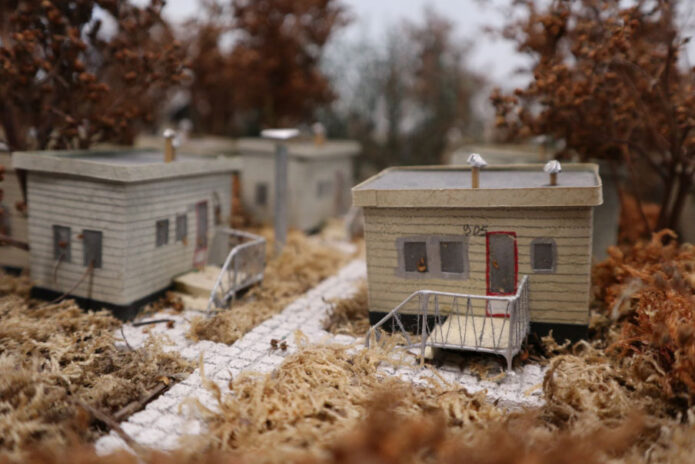
Karen Gegiazarian
Artist

Mina Etemad
Freelance journalist, podcast maker and presenter
